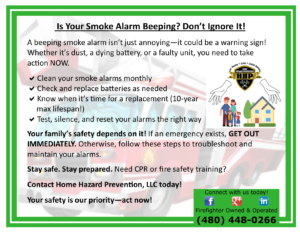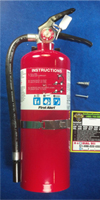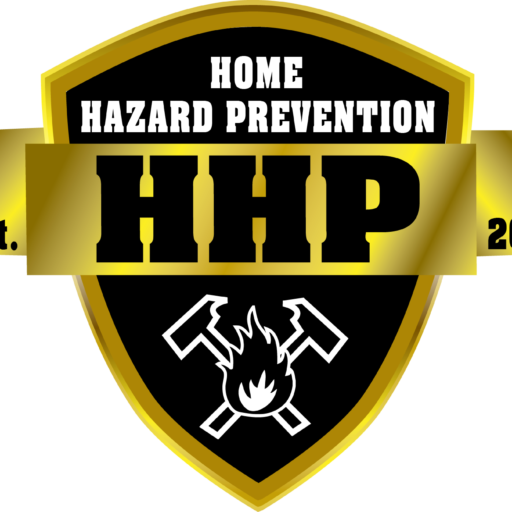Fire Extinguishers & Smoke Detectors Save Lives!
When it comes to fire safety, prevention and preparation are your best defenses. Every year, thousands of home fires result in injuries, deaths, and property loss—many of which could have been prevented with working smoke alarms and properly rated fire extinguishers.
At Home Hazard Prevention (HHP), we provide expert fire extinguisher training, smoke detector placement guidance, and home safety inspections to ensure that your family and home are protected.
Fire Extinguishers: Your First Line of Defense!
The National Fire Protection Association (NFPA) recommends having at least one portable fire extinguisher per level of your home. But not all fire extinguishers are created equal! Different types of fires require different extinguishers, and without the right knowledge and training, even the best equipment is useless in an emergency.
Fire Extinguisher Ratings & Classes:
✅ Class A: Solid materials (wood, paper, fabric)
✅ Class B: Flammable liquids (gasoline, oil, paint)
✅ Class C: Electrical fires (becomes Class A once power is off)
✅ Class D: Combustible metals (magnesium, titanium)
✅ Class K: Kitchen fires (cooking oils, fats)
Larger numbers = more effectiveness! A 10-A:80-B:C extinguisher is much more powerful than a 2-A:10-B:C model.
Want to know which extinguisher is right for your home? Contact HHP at (480) 448-0266 for a personalized fire safety consultation!
Smoke Detectors: Your Early Warning System!
Did you know that a working smoke alarm can double your chances of survival in a house fire? Yet, many homes lack sufficient alarms or have dead batteries.
Essential Smoke Alarm Tips:
✔ Install at least one smoke detector per level of your home
✔ Test alarms monthly (press the test button!)
✔ Replace batteries every 6 months
✔ Replace smoke alarms every 10 years
✔ Clean with a vacuum or compressed air to prevent dust buildup
PRO TIP: Many newer homes have hardwired smoke alarms with a battery backup—so if one alarm detects smoke, all will sound.
Not sure if your alarms are up to code? Let Home Hazard Prevention inspect your home and identify potential risks! Call (480) 448-0266 today!
Protect Your Home & Family with Expert Fire Safety Training!
Knowing how to use a fire extinguisher and properly maintain smoke detectors can save lives. HHP provides:
✅ Fire extinguisher selection, placement & training
✅ Smoke detector inspection & installation tips
✅ Full home safety inspections with expert guidance
✅ Commercial-grade fire extinguisher included with home assessments!
Don’t wait for an emergency! Call (480) 448-0266 today for a fire safety consultation or to schedule a home safety inspection.



Leave a Reply